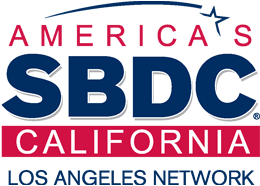Publisher: Kelly Burkart – Posted on 03/08/2013
When cash is tight, discounting can be a tempting quick fix. Lower your prices, increase your sales, get more cash. But, like most quick fixes, there is a down side. The danger comes when discounting becomes a
long-term strategy rather than a short-term tactic. The first article in this series discusses the pros and cons of using discounting to create cash flow.
How discounting impacts customer loyalty
Everyone loves a deal, right? So you’d think your regular customers would be thrilled to receive a discount. And they probably will, at first. But think about what attracted your best customer to begin with; it was probably much more than price. Factors like product variety, personal service, or a reputation for on-time delivery are what keep customers coming back. If they see you lowering prices often, they may assume you’ve lowered your standards or that your business is on the ropes.
Discounting also attracts more “price shoppers,” which is an entirely different, and fickle, audience. They’ll only be with you as long as you have the lowest price. And customers who use discounts to “stockpile” translate into fewer sales in the future.
A steady stream of discounts can cheapen your brand and actually drive away your best customers.
Use discounting selectively
If negotiating is the usual method of doing business in your industry, that doesn’t automatically mean you have to discount your prices. You can avoid discounting by promoting the total value of your product or service including your excellent customer service, wide product line, accuracy, on-time delivery record, etc.
Remember, if you discount your price for one customer, you’ll likely have to discount for other customers, and prospective customers. You could end up trapped selling at a lower price permanently which is more bad news for your cash flow.
To avoid being stuck in permanent discount mode, stipulate to your customer that you’re offering a one-time only discount or a first-time customer discount. If your customers are segmented into different markets or industries, it’s easier to offer a discount to one group without having to offer it to everyone.
When discounting makes sense
Discounting is a good way to clear out seasonal merchandise, and customers have come to expect after-holiday and end-of-season bargains. It’s also a way to get rid of products that aren’t selling well or can’t be returned, and it’s more cost-effective than paying to store items that may or may not sell at a later date. Discounting can be your friend in these situations.
Offering a discount to customers who pay bills immediately is a good way to increase your cash flow without cheapening your brand. Customers save and you have more cash—it’s a win-win for everyone.
There are some businesses where discounting is the norm. For example, if your sales are conducting in an auction, price cuts are expected.
Discounting can also be a way to attract new customers who haven’t used your product or service before. The downside is you can’t predict how much of the business will return, and you may offend your long-time customers who see newcomers getting a better deal.
Discounting can be a useful tactic to stimulate an influx of cash. But use it wisely or discounting will become the norm. The next article in this series discusses the impact of discounting on profitability.
Kelly Burkart is a freelance writer from Minneapolis, Minn. While she has spent most of her time writing about financial services the past 15 years, she has also explored and written about everything from cardiovascular health to travel, higher education and sustainable energy practices.
©2013 All rights reserved.





